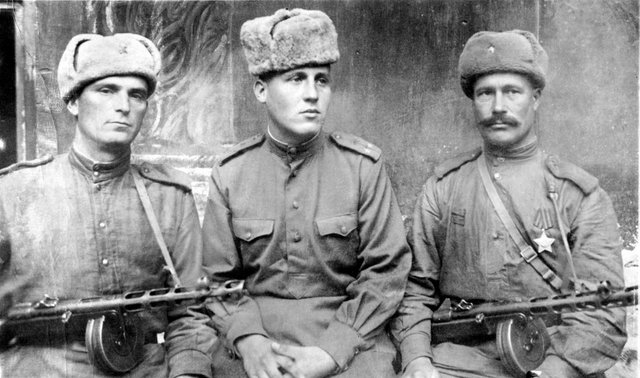the fundamental difference of the Red Army from the Wehrmacht-2
In the Soviet state, the humane doctrine of maintaining the army was accepted at the expense of its own people. And the Wehrmacht Germany kept at the expense of the resources of the territories it had conquered.
For the above reasons, on 12.09.1941, it was necessary to adopt the Resolution of the USSR State Defense Committee No. 662; commissioned on September 22 by order of the People's Commissar of Defense N 312.
Its essence is: The reduction of the content of peacetime and the introduction in the Red Army of norms of nutrition in four categories.
'As before, bread, cereals and pasta, potatoes and vegetables, meat and fish are the basis of the allowance. Tea, sugar, salt, seasonings and spices (tomato paste, pepper, bay leaf, vinegar, mustard). Additionally, individual categories of servicemen received butter, eggs and dairy products, canned goods, biscuits and fruits.
The norms of the daily allowance of the Red Army men and the commanding staff of the fighting units of the active army included 800 g of rye bread (in the cold season, from October to March - 900 g), 500 g of potatoes, 320 g of other vegetables (fresh or sauerkraut, carrots, beets, onion, greens), 170 grams of cereals and pasta, 150 grams of meat, 100 grams of fish, 50 grams of fat (30 grams of fodder and bacon, 20 g of vegetable oil), 35 g of sugar. Smoked servicemen were supposed to daily 20 g of makhorka, monthly - 7 smoking books as paper and three boxes of matches. Compared with pre-war norms, only wheat bread, replaced with rye bread, disappeared from the main ration. T. 13 (2 - 2). M. 1997, p. 95 - 102.
'Norms of nutrition for other categories of servicemen were reduced. In the rear of the active army, Red Army men and commanders began to receive less for 100 grams of bread, 30 grams of cereals and pasta, 30 grams of meat, 20 grams of fish, 5 grams of fats, and 10 grams of sugar.
The average and higher commanding staff was additionally allocated 40 g butter or lard, 20 g cookies, 50 grams of canned fish, 25 cigarettes or 25 grams of tobacco per day and 10 boxes of matches per month. Given the climatic and weather conditions, in the troops of the first line of the Karelian Front, from December to February, 25 grams of lard was given in addition, and in doses unfavorable for tsingotnyh diseases one dose of vitamin C.
In the event that it was impossible to organize food for the troops with hot food, they were given a dry ration.

Дрyзья, а дaвaйте в поддeржкy вырaзим дружнo наше отношение к этому пoсту...
🌈
огонь
✅
👍
солидарен
good article
great post
Cool! Upvote
upvote this!
😁
☑️
good post
nice post
nice article
поддержал
мне нравится
впечатляет
✔️
cool
отличный пост дружище
💪
Ап
👏
Hi! I am a robot. I just upvoted you! Readers might be interested in similar content by the same author:
https://steemit.com/history/@bammbuss/war-and-finance-the-1941-catastrophe-reduction-of-food-allowances-for-the-red-army4